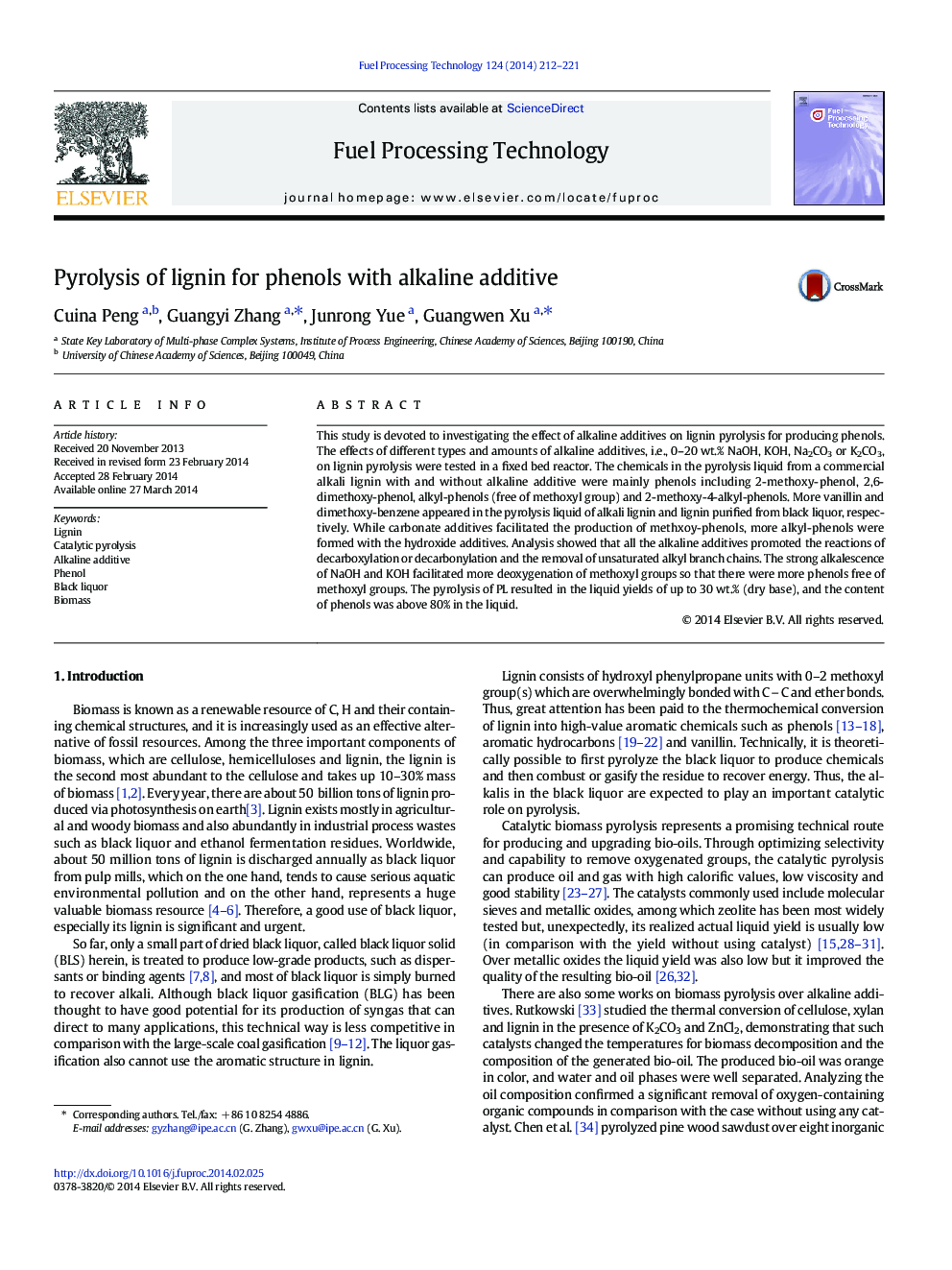| کد مقاله | کد نشریه | سال انتشار | مقاله انگلیسی | نسخه تمام متن |
|---|---|---|---|---|
| 209662 | 461679 | 2014 | 10 صفحه PDF | دانلود رایگان |
• Hydroxide and carbonate alkalis facilitated the production of phenols of lignin.
• Hydroxide facilitated deoxygenation to produce more phenols free of -OCH3 groups.
• Carbonate mainly promoted the production of methoxy-phenols.
• The lignin purified from BL produces more phenols than commercial alkali lignin.
This study is devoted to investigating the effect of alkaline additives on lignin pyrolysis for producing phenols. The effects of different types and amounts of alkaline additives, i.e., 0–20 wt.% NaOH, KOH, Na2CO3 or K2CO3, on lignin pyrolysis were tested in a fixed bed reactor. The chemicals in the pyrolysis liquid from a commercial alkali lignin with and without alkaline additive were mainly phenols including 2-methoxy-phenol, 2,6-dimethoxy-phenol, alkyl-phenols (free of methoxyl group) and 2-methoxy-4-alkyl-phenols. More vanillin and dimethoxy-benzene appeared in the pyrolysis liquid of alkali lignin and lignin purified from black liquor, respectively. While carbonate additives facilitated the production of methxoy-phenols, more alkyl-phenols were formed with the hydroxide additives. Analysis showed that all the alkaline additives promoted the reactions of decarboxylation or decarbonylation and the removal of unsaturated alkyl branch chains. The strong alkalescence of NaOH and KOH facilitated more deoxygenation of methoxyl groups so that there were more phenols free of methoxyl groups. The pyrolysis of PL resulted in the liquid yields of up to 30 wt.% (dry base), and the content of phenols was above 80% in the liquid.
Comparing to the case without alkaline additive, the addition of 20 wt.% hydroxide or carbonate greatly varied the production of major phenolic chemicals. Because the liquid yield only slightly decreased by the additives, the content in the produced tar represents also the total production rates of all the plotted chemicals. In general, the use of alkaline additives resulted in higher production of phenols. The carbonates obviously promoted the production of methoxy-phenols, while the hydroxides greatly increased the alkyl-phenol production. All the tested additives reduced the production of vanillin. At the same additive amount, the sodium alkalis exhibited the higher effect than the potassium alkalis because the former had actually more moles due to its lower molecular weight.Figure optionsDownload as PowerPoint slide
Journal: Fuel Processing Technology - Volume 124, August 2014, Pages 212–221
